-
Posts
151 -
Joined
-
Last visited
Content Type
Profiles
Forums
Gallery
Events
Posts posted by Binho
-
-
-
-
-
To be a bit controversial, my feeling had always been that the Gokstad and Oseberg ship were most likely not warships, and I have my suspicions that perhaps they were just purpose built burial ships. The flat decks and lack of thwarts are unlike any other scandinavian ships and boats found (even the smaller boats found with the Gokstad had thwarts). Earlier ships, like the Nydam ship and the Hjortspring boat, have thwarts. Later ships, like the Skuldelev, Hedeby, Ladby, and Roskilde ships have thwarts too. I don’t think there was much trace of wear on the Gokstad and Oseberg keels either? That seems to be pretty normal on shios found in non-burial contexts.
However, I do like the solution of the planks being removed and the rowers sitting on the frames. That makes a lot more sense for a usable ship. Never liked the idea of rowers sitting on chests. Perhaps the planks were just added to create a flat surface for the burial hut and other goods.
Can I asked what you did for the paint? It looks really good! I got some closeups of the tar on Skuldelev replicas if that would be helpful, but yours already looks really close. -
-
Haha, I think I’ll stay away from the lead, definitely not looking for that much accuracy 😆 I decided on a black and red color scheme, maybe with a white accent on the too strake. I stained my hull today, but I think gluing it all together first was a mistake actually. The glue has made it all very blotchy. I’ll post a pic tomorrow when it dries - perhaps it’ll look interesting and add a bit of flavor. I’m sure I can salvage it!
- Cathead and Louie da fly
-
 2
2
-
I was able to do mine freehand, but it was much smaller. Even then I had some issues aligning the planks. I think a frame would be better too. Coming along nicely!
- FriedClams, Cathead and mtaylor
-
 3
3
-
Found a useful resource from the Danish National Museum. The actual scientific article is only in Danish, but there is a good article on Science Nordic about it in English, including a color palette with a description of each pigment and the presumed relative cost.
https://sciencenordic.com/denmark-history-society--culture/how-to-decorate-like-a-viking/1455997
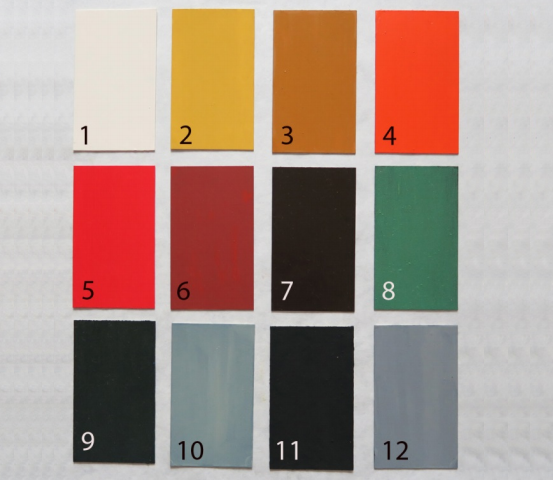
They hypothesize green would have been from malachite (copper ore) and would have been imported, so would probably be expensive. As you said Steven, reds blacks, yellows, and whites would be the most common. I think I’ll try red and black with maybe a white accent or decorative motif, like the Skuldelev 5 had. -
-
On 7/7/2020 at 6:34 PM, Louie da fly said:
The "blue" on the viking shields in the link I gave early on in this build is apparently made from wood ash. Perhaps that plus yellow ochre would make a green? Might be a pretty dodgy green, though. On the other hand, it's your model. Depends on how finicky you want to be.
But please don't go here
 :
:
loool! I'm pretty finicky about these things so I'm definitely going to do more research!
-
22 hours ago, Cathead said:
Out of curiousity, what was your reasoning behind waiting to stain the hull until after assembly, rather than staining each plank separately ahead of time? I would have thought that staining after assembly would risk messing with the glue? Apologies if I missed this answer earlier in the log, I'm reading lots of stuff right now in preparation for my own build and may have overlooked it.
Hmm, my reasoning was that if I stained on the sprue, I wouldn't get the ends. If i stained the planks individually I thought it would take longer and be fidgety. But yeah, hopefully I won't have any issues with the glue!
21 hours ago, Louie da fly said:I'd try it on scrap first to see if you like it. Personally, I find yellow ochre, red ochre and black and white (all possible with the materials of the day) a very attractive combination. I hadn't thought so until I saw a tv show where someone did a recosntruction of an Ancient British chariot and painted it in the colours above with the materials available nearby. Not sure how you'd make green paint back in the day. But it's your model - do what suits you.

Yeah, I'm going to do more tests on scrap. I really like red and yellow and yellow and black, so I thought I would like the combination but I didn't really. Maybe if I switch the order? My Skuldelev 5 3D model already used red and yellow, and I didn't want to make an exact replica of the Sea Stallion with red, yellow, and blue. I know in the ancient Mediterranean, green was sourced from malachite and a pigment called "green earth", but I'm not sure about Scandinavia. But yeah, red and yellow ochre would be super common everywhere.
-
Looking so good, love your figurines!! A lot of work but adds so much
- Louie da fly and mtaylor
-
 2
2
-
Thanks Steven! Got my little work area in the garage now, but haven’t had time to work on it. Been working on an app for visualizing an archaeological site on the side, as well as learning photogrammetry. I’ve got too many hobbies! Haha.
I’ll probably get back to it fairly soon. Going to try different colors too, not sure I’m 100% happy with the black, yellow, and red. I might try red and green.
On a more nautical note also found some time to do a 3D model of the Skuldelev 3. Much faster to make ship models on the computer

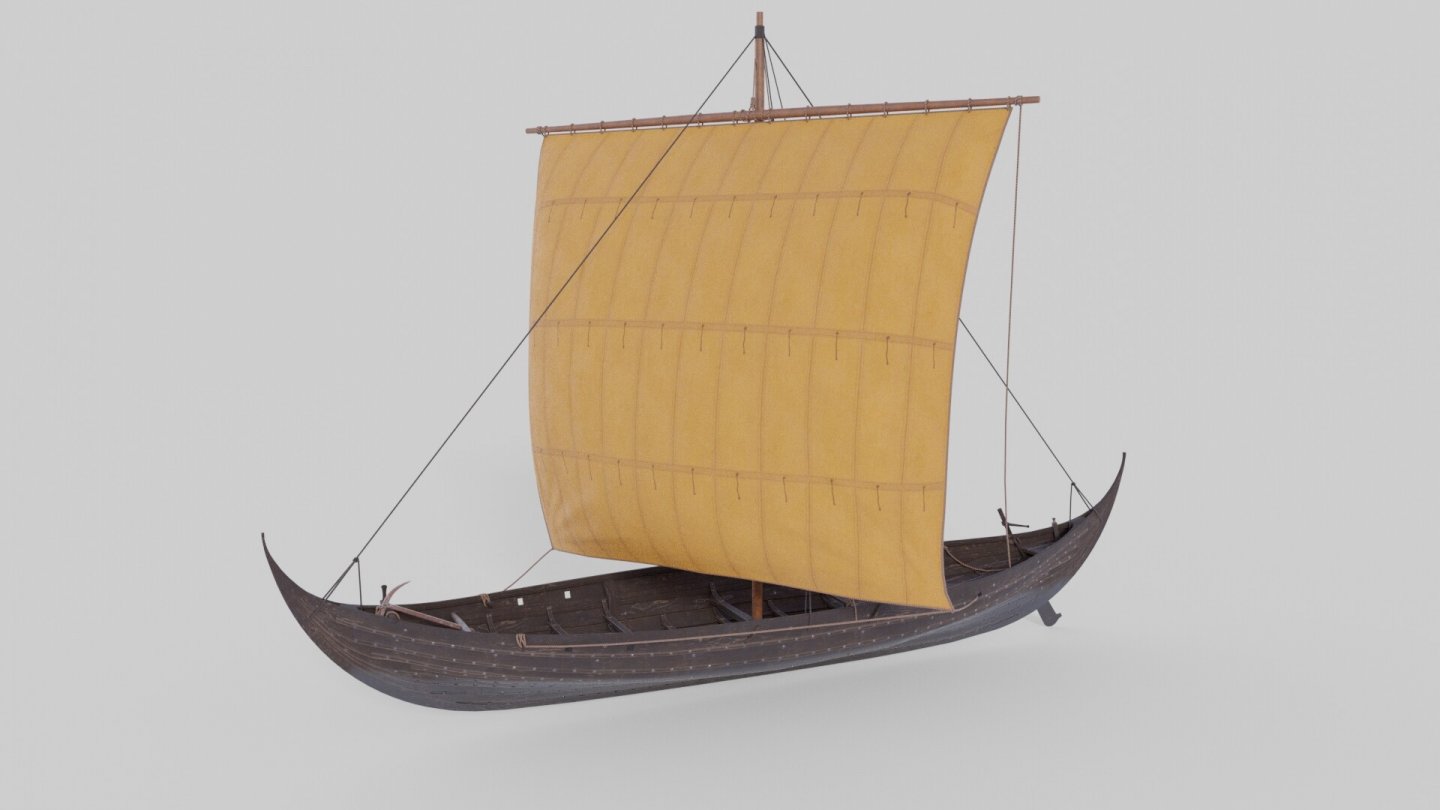
More renders on my artstation page here:
https://www.artstation.com/artwork/GXrP1B
- GrandpaPhil and Louie da fly
-
 2
2
-
-
Cool subject! In regards to the Gokstad I don’t know enough to say which plan is the most “accurate” - but remember, all archaeological reconstructions are hypothetical. These ships that were excavated over 100 years ago even more so. This ship was excavated in 1880 and not to modern standards, after being crushed and deformed by tons of earth for 1000 years. It was then broken up, moved, puzzled back together, and bent back in to shape. Bits were even added, to make it look sexier on display. My advice would be to read about how they came up with each of the plans and go with the plan you find most convincing.
Sorry, not much help. Looking forward to see what comes out though!
- mtaylor and Louie da fly
-
 2
2
-
Still working on it! Got a small update today - tested out the color palette I plan to go with. The stains are Minwax Red Oak for the hull, and on the top left is Golden Oak which I’m going to use for the mast and oars. The black, yellow ochre, and flat red are Vallejo acrylics. I think I’m pretty happy with it overall! I might get to the staining and painting of the hull this week. I need to do it before the deck veneer and thwarts go in.
- Louie da fly and GrandpaPhil
-
 2
2
-
-
Wow, coming along nicely Steven! Loving your shields!
Regarding oar lengths, for ancient ships it is hardly a settled argument. The main point of contention is that in Athenian naval inventories of the 4th-5th centuries three types of oars are called out. One camp says that all the oars were the same length, but the difference was in the gearing and paddle shape - the other that they were different lengths, like the 15th century and earlier ‘alla sensile’ rowed galleys. Personally, I fall in the later camp (at the moment anyways). So don’t worry too much!
- mtaylor, Louie da fly and EJ_L
-
 3
3
-
Hey everyone, thanks for checking in. No progress as of yet - we had a kitchen remodel then a move, but due to the virus we're not fully moved in yet. On the plus side we now have a nice garage that I'll be able to put a small workbench in, so I no longer have to work from the living room coffee table! At this point, I'm not sure when that will be. I might get tired of waiting and just start up again at the coffee table!
Thanks Arjan! It really is a lot of shields and oars, haha. Have you checked out the 1:25 scale Billing Boats model of the Skuldelev 3/Roar Ege? It's a trade ship, so it doesn't have all the oars, but it's got a fairly attractive shape.
-
Just a quick message to say this isn't dead! Just on hold for awhile as I've been really busy these past few months, and will probably only be able to pick back up in February or so! Happy New Year to everyone!
-
Thought this was pretty interesting! A collaboration between Australian, Icelandic, and Dutch archaeologists created this 360 virtual shipwreck dive of the 17th century Dutch Fluyt Melckmeyt that sank off the coast of Iceland. The wreck is recorded in Icelandic annals: it occured while the ship was sheltering during a storm, and all the crew bar one survived. The ship was on a clandestine trading run under a false Danish flag - the Danish government, which controlled Iceland, only allowed Danish ships to trade with Iceland.
The experience is viewable on a VR headset or on your phone. Link is in the article below. Might be a cool ship for someone to build! They provide a reconstruction based on a scanned, authentic, 17th century ship model.
-
It’s interesting to read through your working process! I’m earning about a ship type I wasn’t familiar with. Good work, and that cedar veneer looks very nice!
I was researching more about egyptian ships online and I found this article you might find interesting: https://www.britishmuseum.org/PDF/Ward.pdf
- thibaultron, Nikiforos, J11 and 1 other
-
 4
4
-
- paulsutcliffe, Keith Black, Arjan and 4 others
-
 7
7
-
Hey everyone, mainly pictures here! Filled in some gaps between the stringers and rear bulkheads cause by an incorrect measurement. Then used some filler to smooth the transition between the front bulkhead and the extensions forming the bitts. Following that I cut, carved bent, and filed out fore and aft breasthooks using scraps from the plywood sheet the planks and shields were in. Plus, some of the figures for scale!


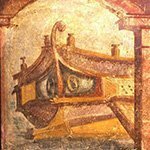
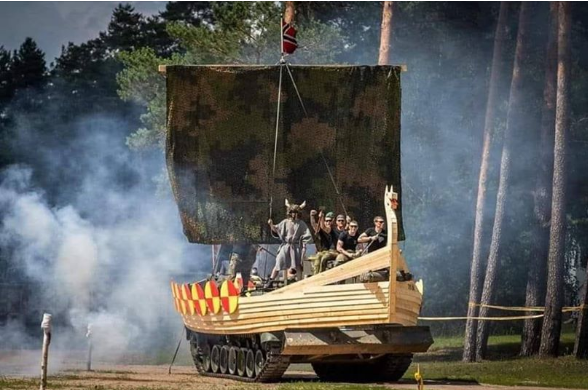
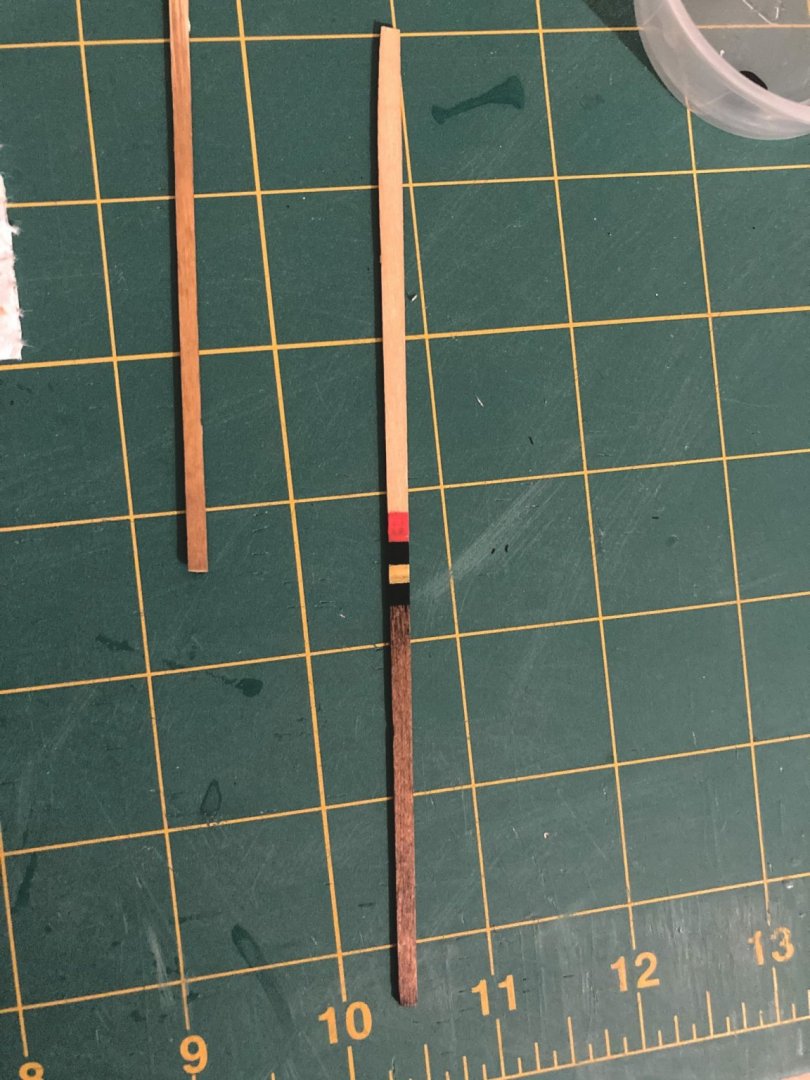
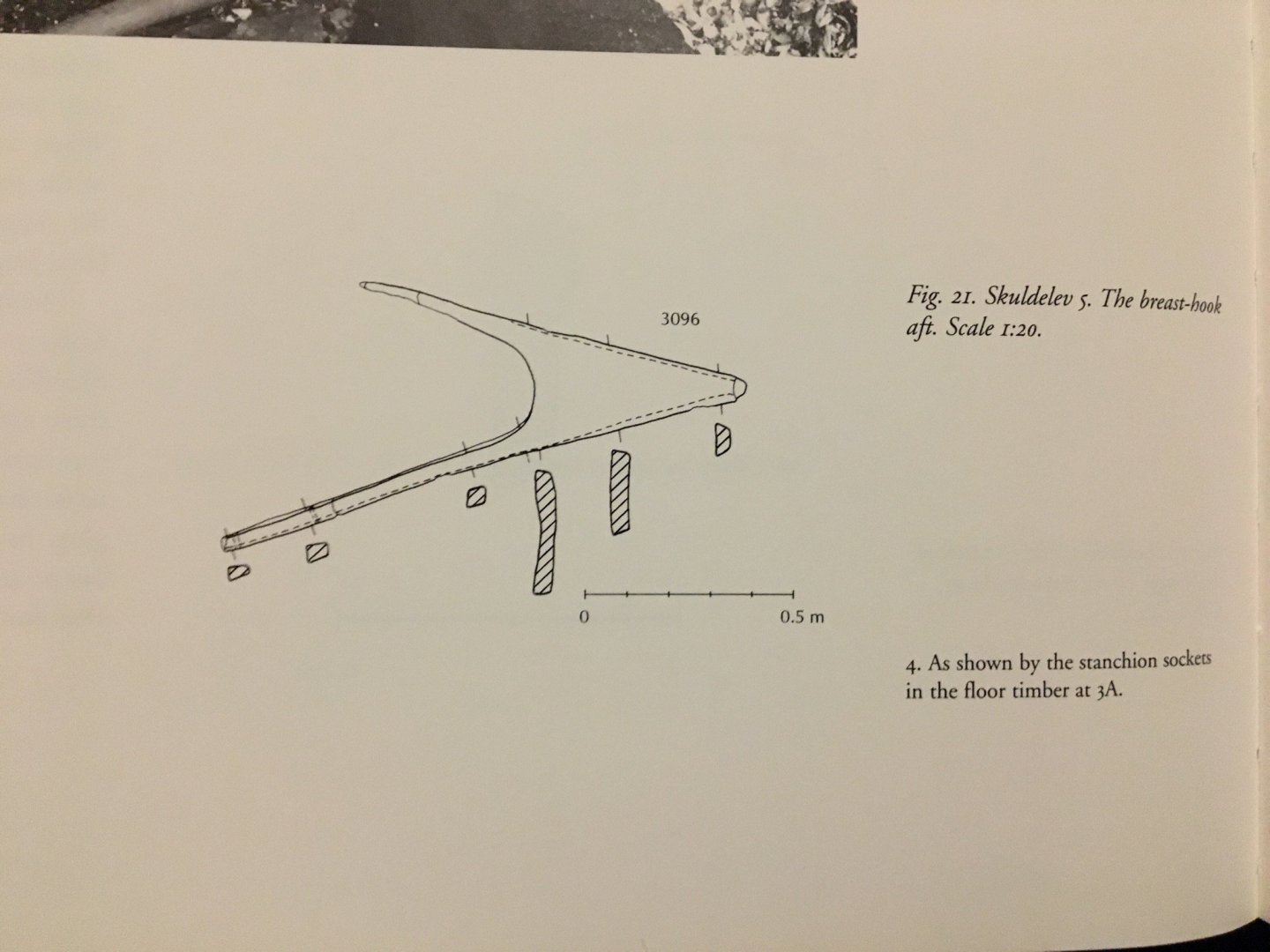
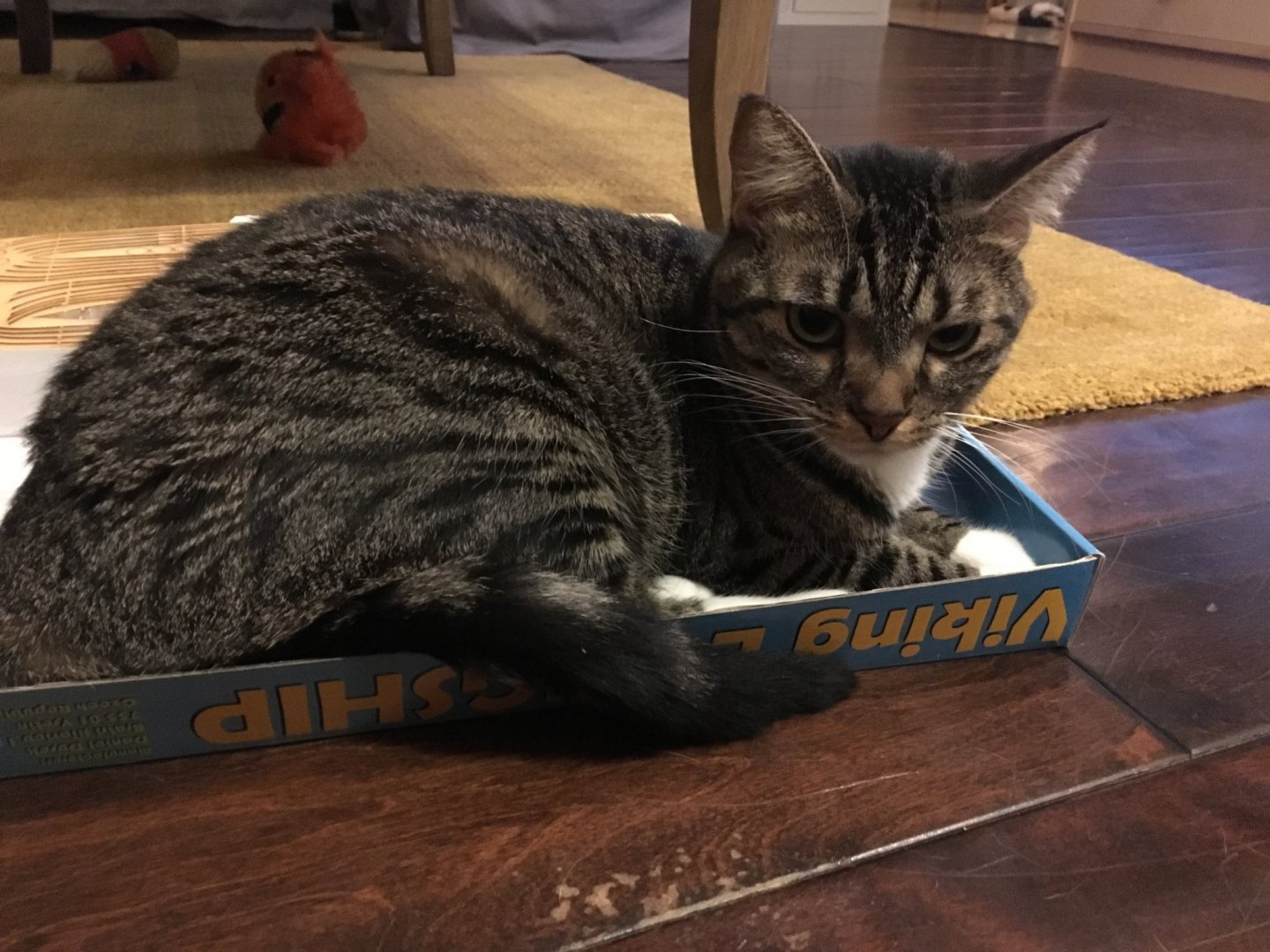
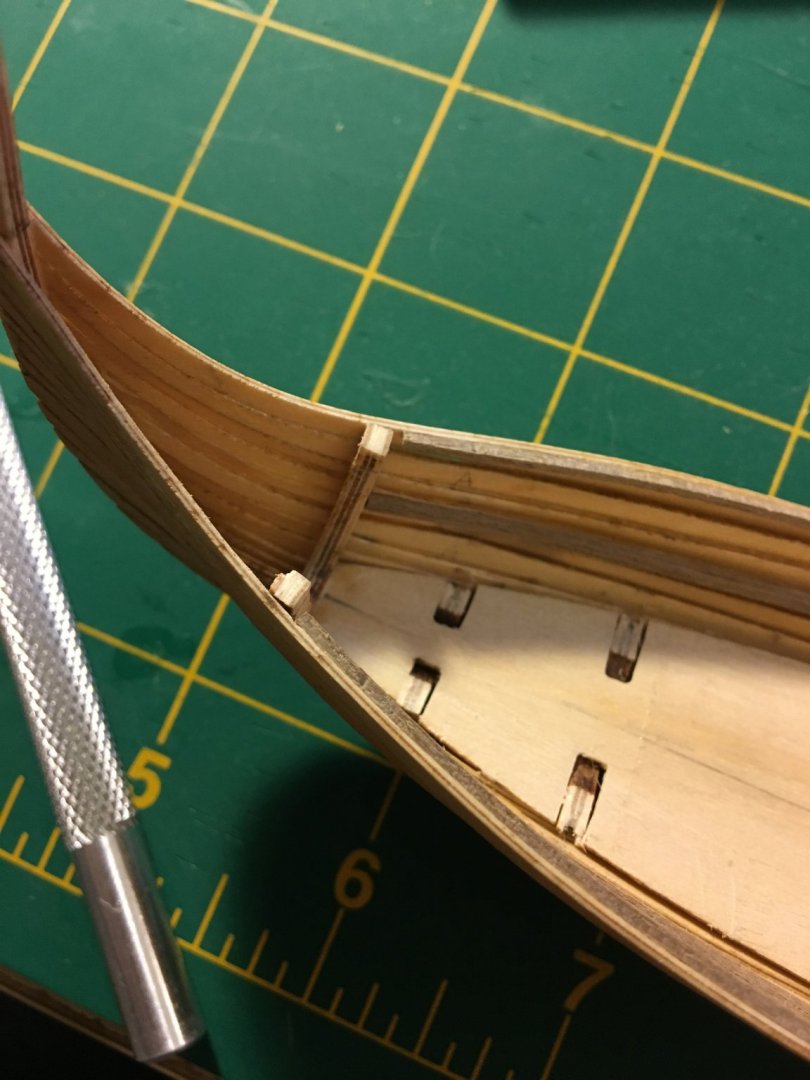
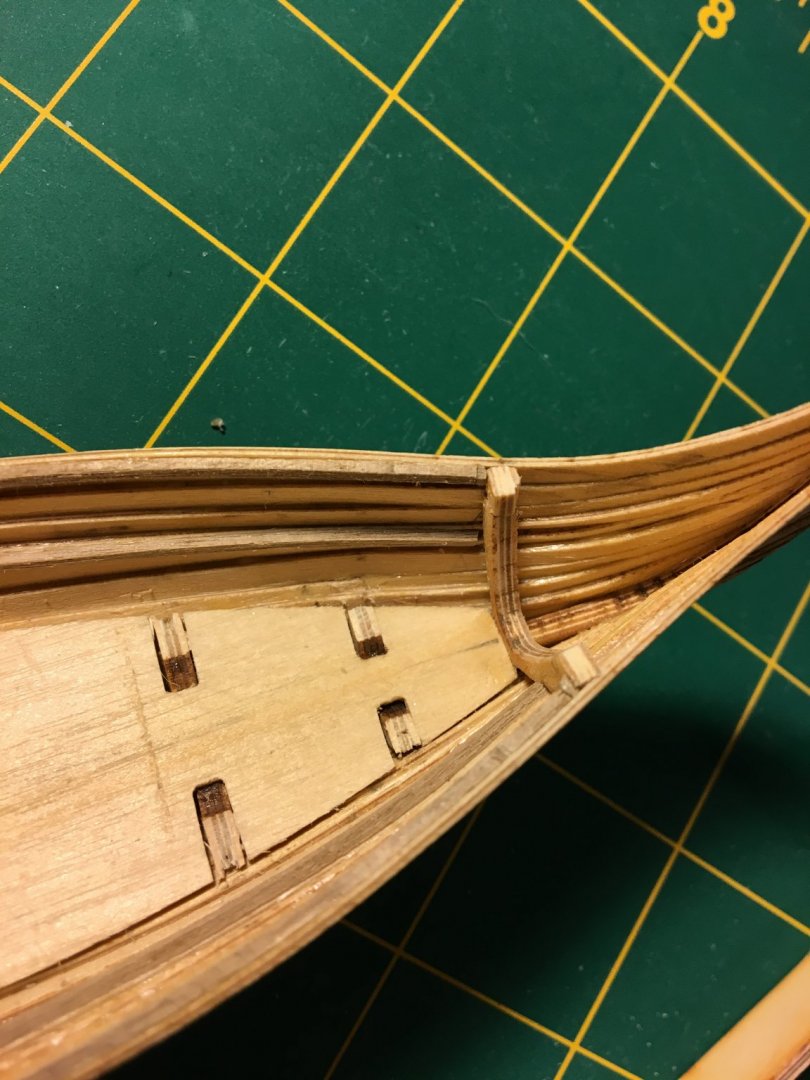
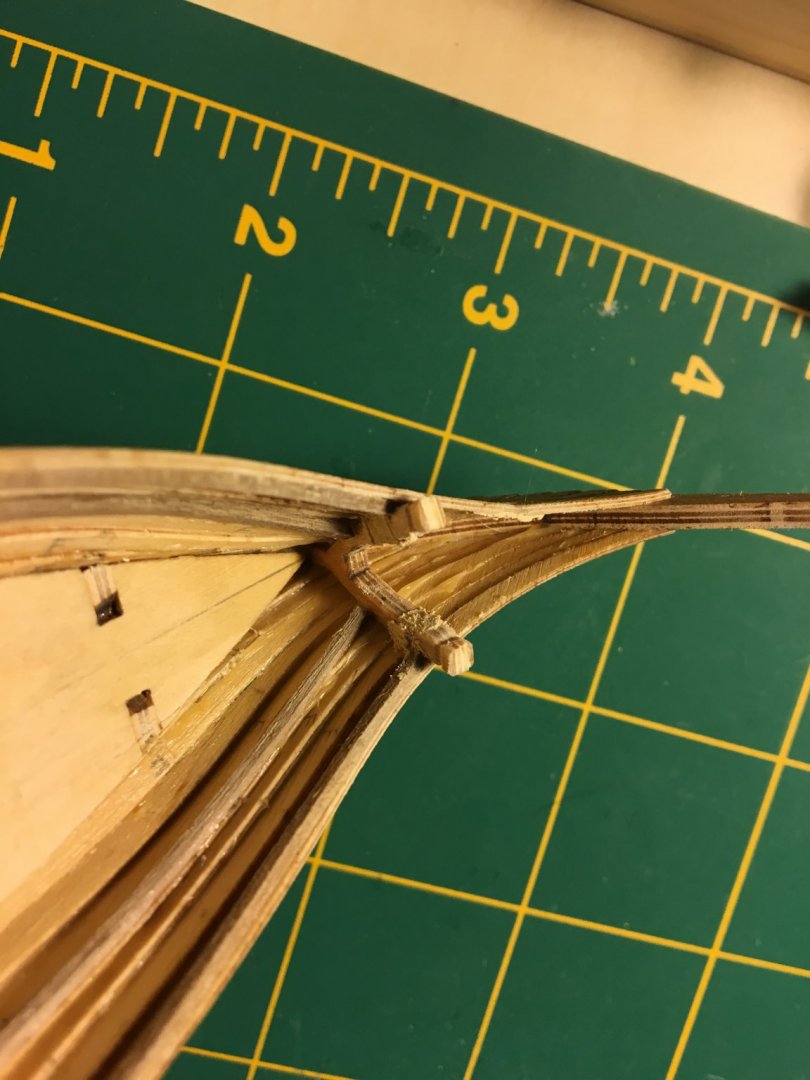
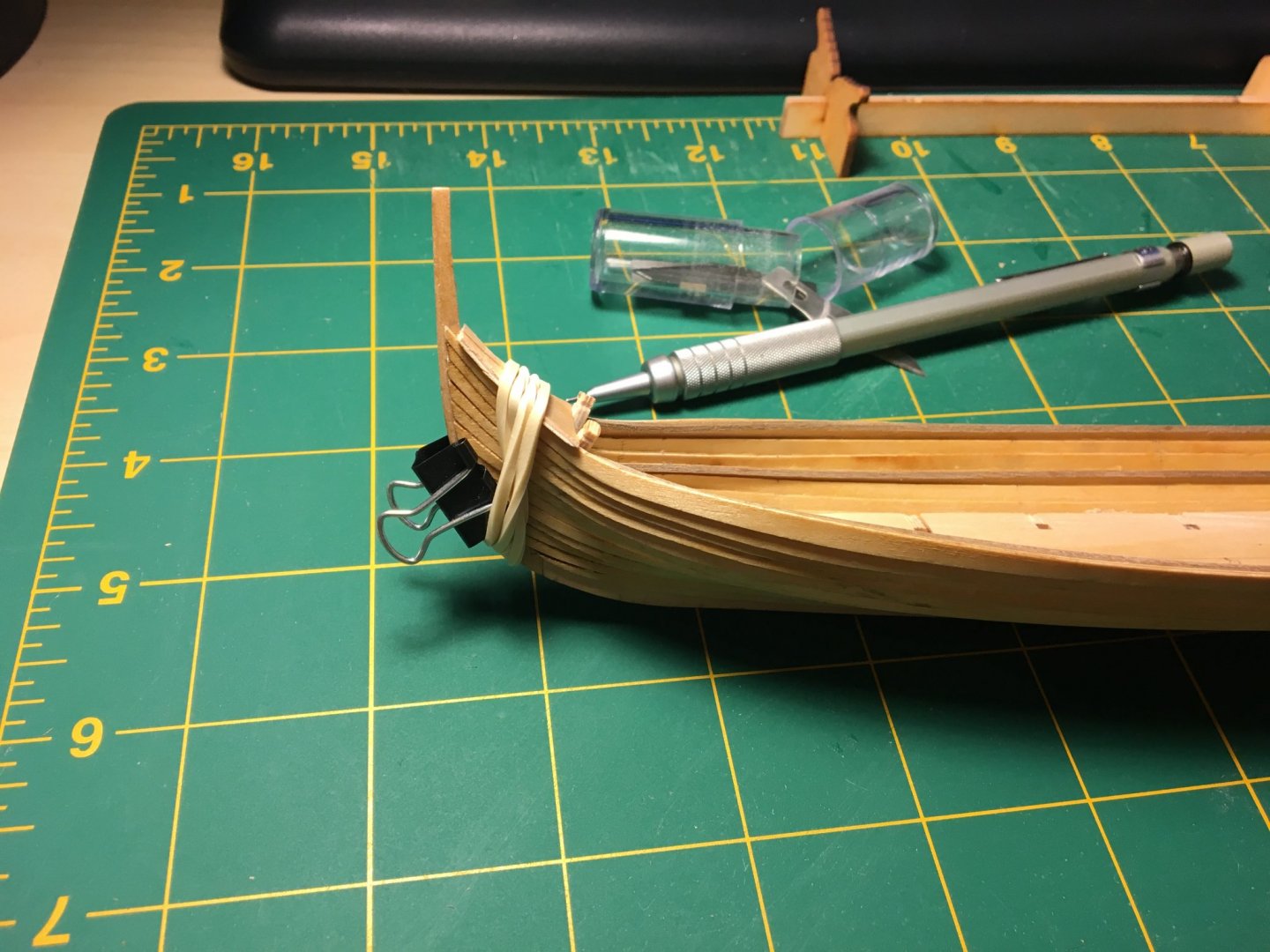
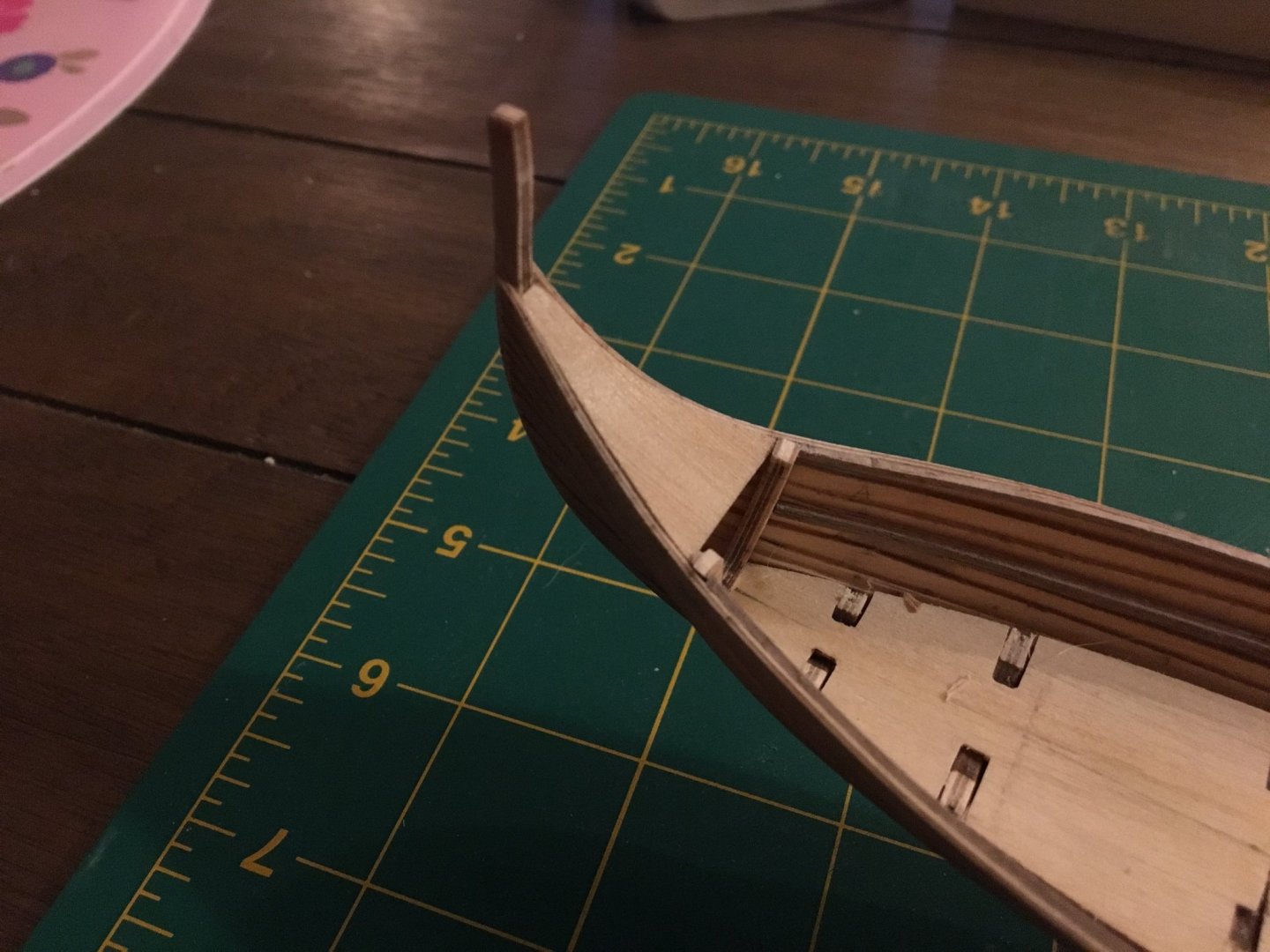
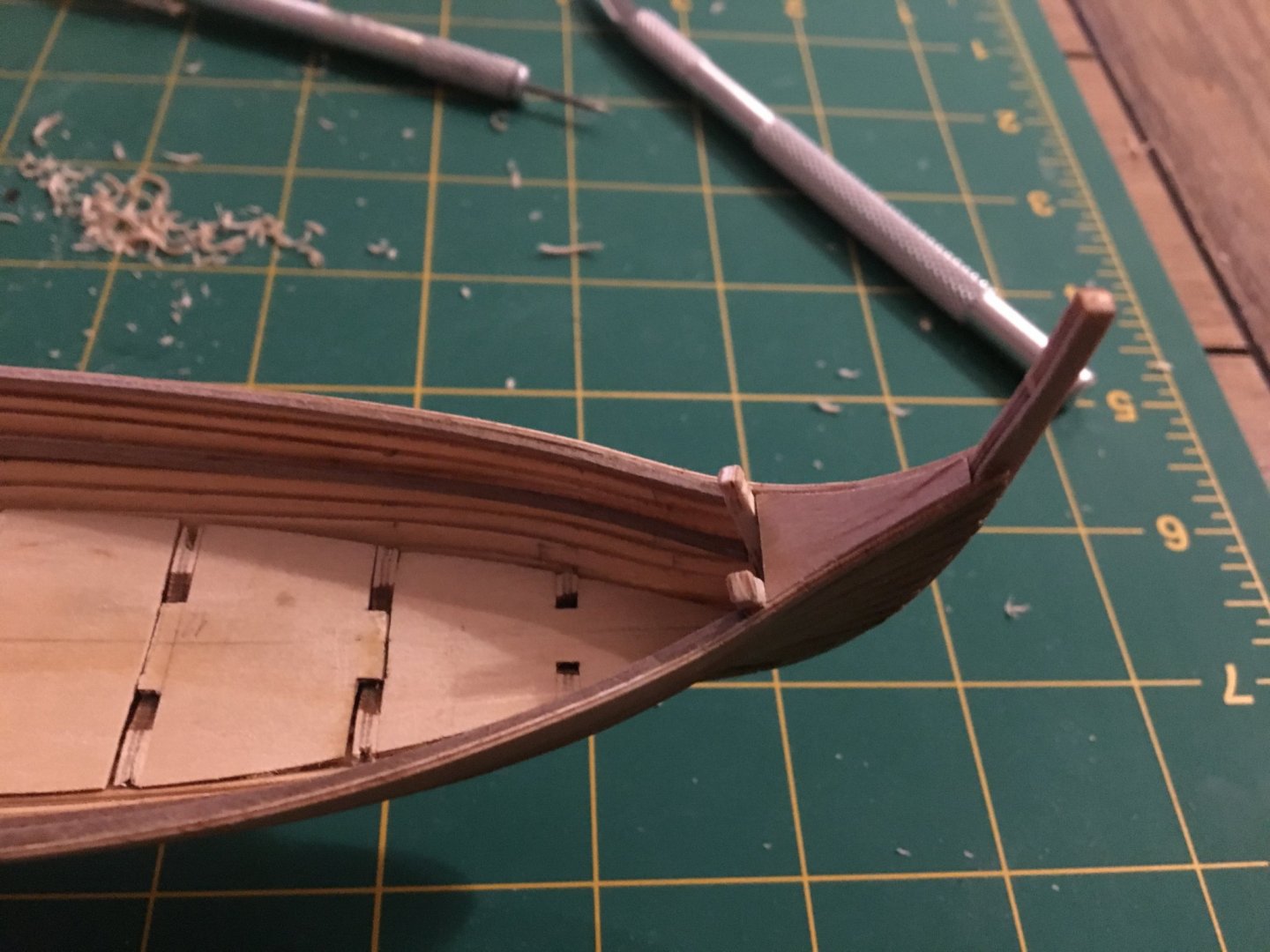
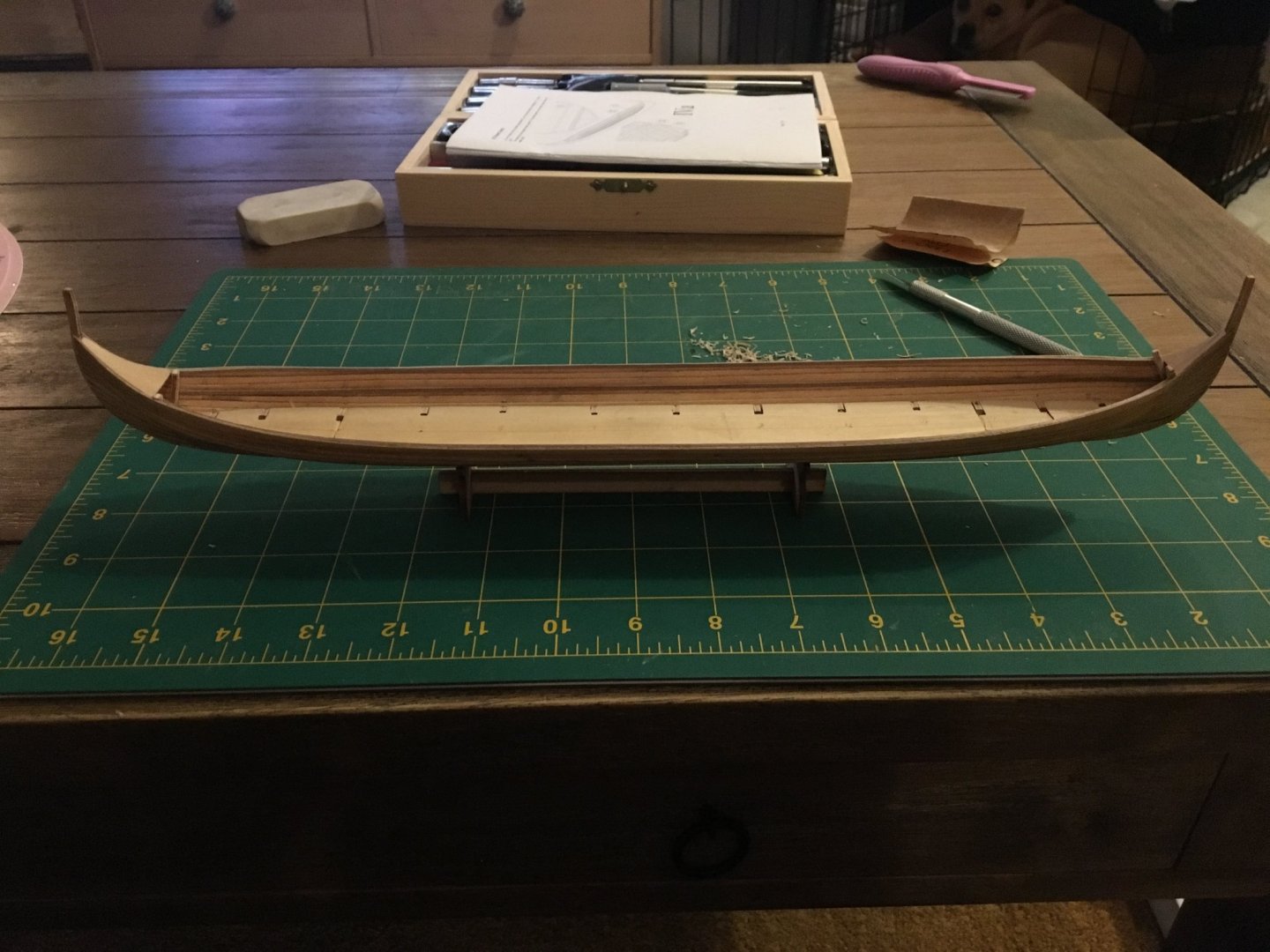
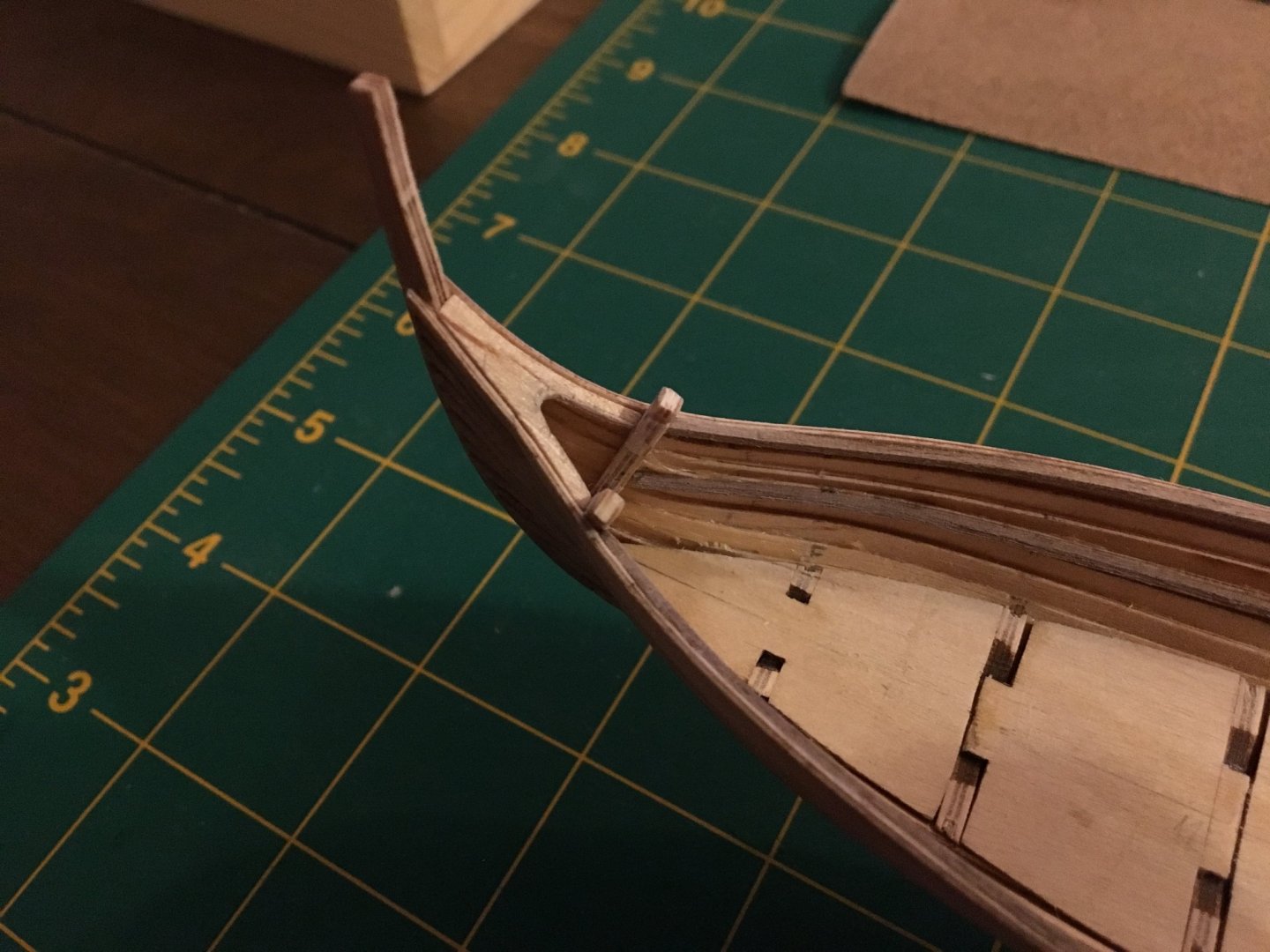
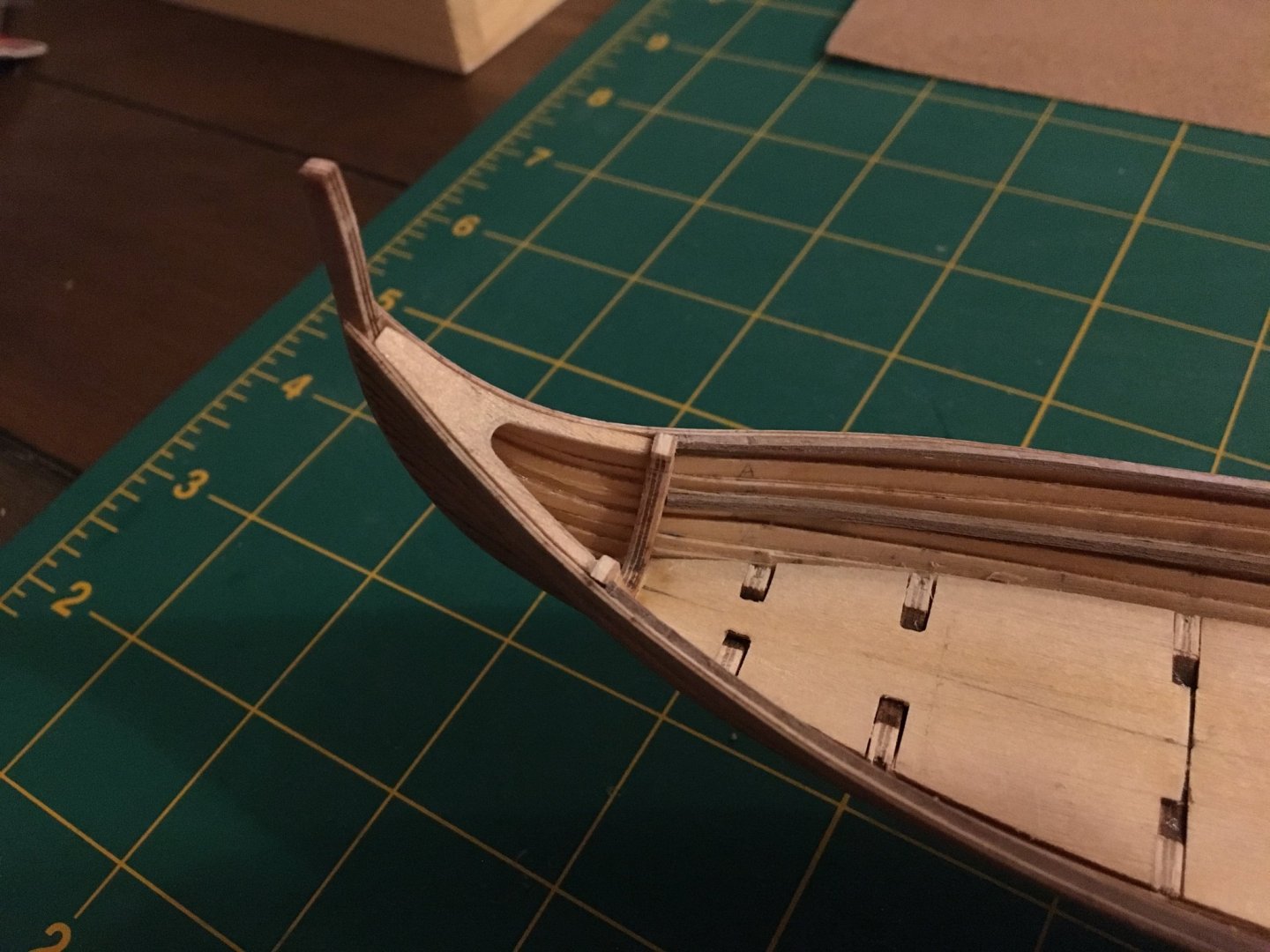

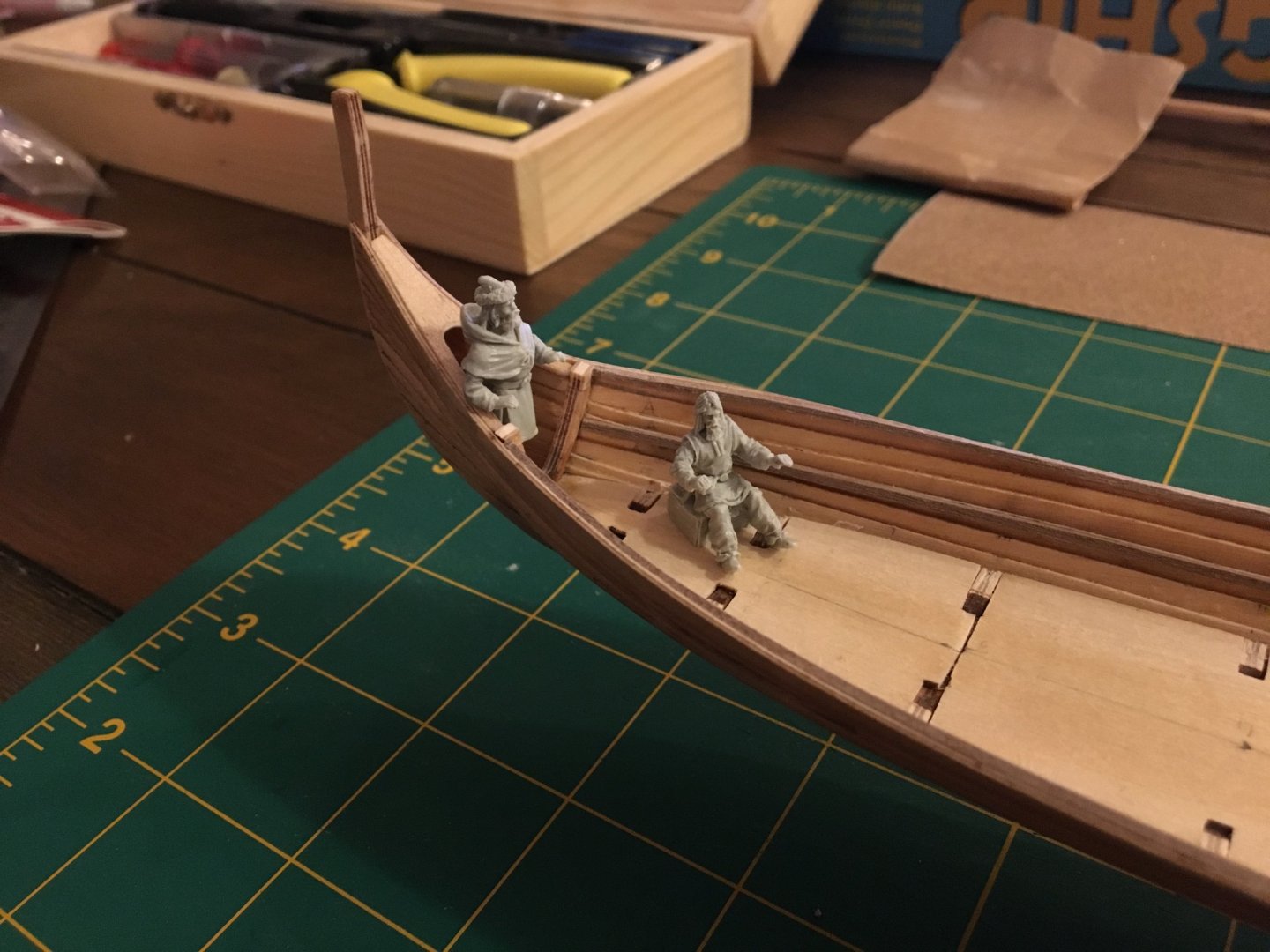
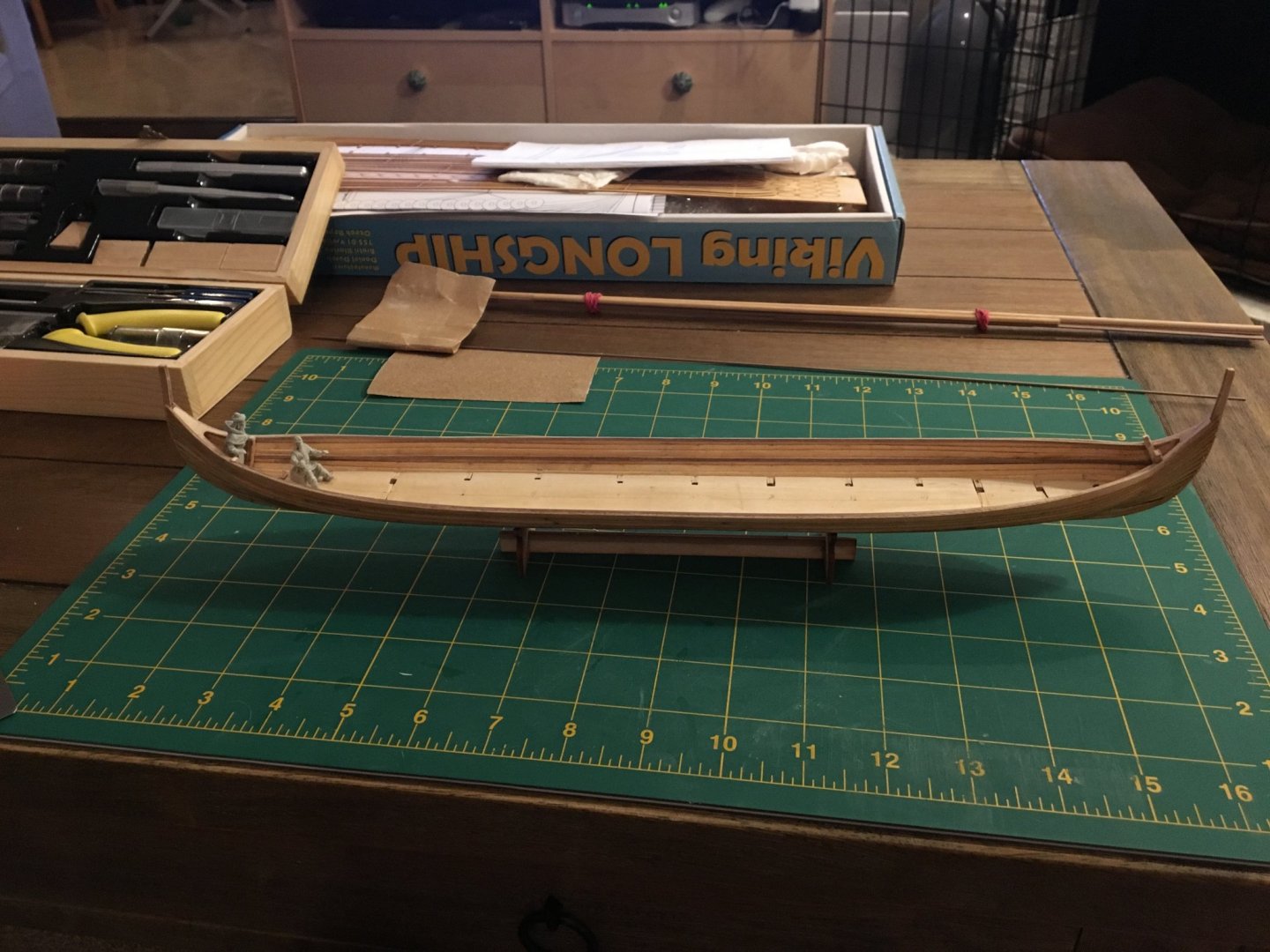
Gokstad c. 900 AD by bigpetr - 1:48 - CARD - viking ship
in - Subjects built Up to and including 1500 AD
Posted
I stand corrected - you are right! I looked up the dendrochronological studies you referred to and there were various decades between the ship timber felling dates and those for burial chamber. Learned something new! So yeah, am 100% onboard now that these were actually used ships. The 1882 excavation report for the Gokstad ship also mentions wear on the ship timbers. So ignore my previous post!
Just had a thought looking through the images from the Ship museum - what if the thwarts/rowing benches on the Gokstad and Oseberg were loose and removable? It seems to be pretty common even on modern traditional Scandinavian boats. It is how they reconstructed the Skuldelev 6 and the smaller Gokstad boats, and it seems to have been the case for the Kvalsund ship from around 700 CE. You can see an example of what I mean in the images below. Of course, a 5m span is on the large end for an unsupported plank/beam. Perhaps it could have had floating supports that weren't fixed to the deck crossbeams? Some Kvalsund ship reconstructions have that.
As promised, here are some close up references of tarred hulls from the Viking Ship Museum in Roskilde. Your paint test looks really close! First two images are from the Roar Ege, a reconstruction of the Skuldelev 3 that had been retired before I went in 2017 after 30+ years of use. The darker, more heavily tarred planks are the originals - the lighter colored planks are repairs from a few years ago. It shows how the tarring builds up and makes the hulls darker. I'm not sure what they used for the black bottom below the waterline, or if that is a modern concession to extend the life of the reconstruction.
Next three are some reconstructions of small iron age boats from between 450-800 CE (first image shows the loose rowing benches). Not sure how old they were. Final image is the outer hull and rudder of the Ottar, a reconstruction of Skuldelev 1 that was about 17 years old when I was there.